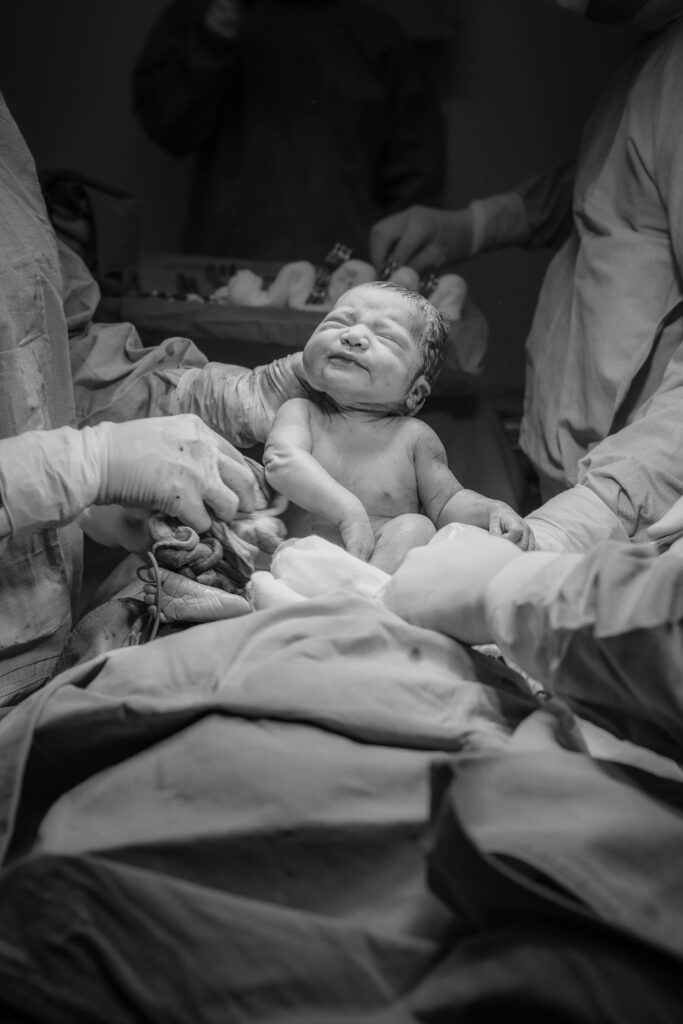Unspoken Births: Psychoanalytic Encounters with Obstetric Violence and Reproductive Trauma
Reflections on Psychoanalytic Approaches to Reproductive Trauma
Author’s Note:
This post draws on published psychoanalytic theory and general clinical reflections. It does not reference specific cases, presentations, or confidential content from the 2025 IPA Congress or clinical settings. The illustration provided is a fictional composite created to explore theoretical dynamics while fully respecting confidentiality.
Introduction
Birth is often idealized as a moment of emergence and life-affirmation. Yet for many—especially those experiencing assisted reproduction or highly medicalized births—labor may be marked by intrusion, coercion, or psychic disorientation rather than agency or awe. Medical settings intended to provide care can paradoxically enact trauma when bodily autonomy is overlooked or the patient’s voice minimized.
The concept of obstetric violence—encompassing physical, emotional, and institutional violations in reproductive contexts—is increasingly recognized in legal and social discourse (Quilter-Pinner, 2021). However, its psychic impact remains underexplored within psychoanalysis. Many patients bring such experiences into therapy often without words, their distress expressed through affect, silence, and bodily symptoms.
This reflection considers how psychoanalytic frameworks can help clinicians hold and symbolize the lingering effects of reproductive trauma.
Obstetric Violence: Between Intrusion and Absence
Obstetric violence can manifest as:
Non-consensual or coercive medical interventions
Dismissal of bodily pain or emotional experience
Objectification or institutional neglect
Disparities linked to race, gender, or socioeconomic status
These violations pose a particular paradox when occurring within care environments. The clash between expected nurturance and experienced violation may provoke confusion, guilt, dissociation, or self-doubt—sometimes described as being “betrayed by help” (Raphael-Leff, 2010).
In assisted reproduction, parallel dynamics can emerge earlier, marked by dehumanizing protocols, procedural opacity, and loss of agency.
Trauma and the Psychic Structure of Birth
Psychoanalytic thinkers such as Bion (1962) and Winnicott have emphasized the importance of containment and the “holding environment” in early development. When birth experiences trauma—when holding is replaced by institutional control or intrusion—the psychic consequences can be profound.
Didier Anzieu’s (1989) concept of the Skin Ego provides a useful framework: traumatic rupture may fracture the symbolic boundary between inside and outside, self and other—resulting in psychic fragmentation, somatic symptoms, or difficulties symbolizing bodily experience.
Reproductive trauma may present as:
Emotional numbness or dissociation around birth
Difficulty bonding with the infant
Persistent somatic tension or shame
Feelings of helplessness or rage without clear conscious explanation
Such symptoms are defensive psychic attempts to manage overwhelming experience (Fraiberg, Adelson, & Shapiro, 1975).
Transference and Countertransference in Reproductive Trauma
In psychoanalysis, reproductive trauma often surfaces atmospherically rather than through clear narrative—expressed in withdrawal, relational disruptions, or tensions within the analytic space.
Common transference patterns include:
Fear of judgment, dismissal, or re-traumatization
Reluctance to articulate bodily or emotional pain
Longing for rescue mixed with fear of intrusion
Analysts’ countertransference responses may involve:
Urges to soothe or “fix”
Uncertainty in naming or interpreting trauma
Somatic reactions such as fatigue or anxiety related to reproductive themes
These dynamics echo the original trauma, where care was experienced as unsafe or absent. The analytic task is to maintain emotional presence without reenacting or denying the trauma (Benjamin, 2018).
Psychoanalytic Tasks in Working with Reproductive Trauma
Key clinical positions to support psychic repair include:
Naming the Violation: Validating the experience without premature interpretation: “Something significant happened to you in that space.”
Making Space for Ambivalence: Holding the complex feelings of loving a child while mourning the loss of an idealized birth.
Re-Symbolizing the Body: Facilitating language for sensation, fragmentation, and violation to repair the “skin ego.”
Separating Baby from Trauma: Supporting differentiation when trauma becomes entangled with the baby’s symbolic meaning, especially in assisted reproduction.
Becoming a Holding Third: When the medical institution functioned as an intrusive or abandoning “third,” the analyst must serve as a symbolic, steady, and non-intrusive alternative (Slade, 2004).
Fictionalized Illustration (Composite)
A woman becomes pregnant after a lengthy fertility journey. Her delivery involves unexpected surgical intervention under distressing circumstances. Months later, in therapy, she describes numbness, emotional disconnection from her baby, and silence whenever birth is discussed.
Gradually, she explores the part of herself that felt unseen and unprotected during labor. Over time, she is able to name not only the medical events but also the psychic rupture they caused—feeling like “a body, not a person.”
As language and meaning return, so does a sense of embodied presence. The baby, once distant, becomes more emotionally accessible.
Conclusion
Obstetric trauma wounds both body and psyche. When it occurs in spaces designed to protect life and autonomy, its effects can be deeply destabilizing. Psychoanalytic work offers a way to hold what was not held—to name, contain, and re-symbolize what was rendered unspeakable.
By attending to transference, bodily memory, and unconscious fantasy, psychoanalysis fosters psychic repair, helping restore the patient’s subjectivity both as a mother and as a survivor who can speak.
References
Anzieu, D. (1989). The Skin Ego. Yale University Press.
Benjamin, J. (2018). Beyond Doer and Done To: Recognition Theory and Intersubjectivity. Routledge.
Bion, W. R. (1962). Learning from Experience. Heinemann.
Fraiberg, S., Adelson, E., & Shapiro, V. (1975). Ghosts in the Nursery: A Psychoanalytic Approach to the Problems of Impaired Infant-Mother Relationships. Journal of the American Academy of Child Psychiatry, 14(3), 387–421.
Quilter-Pinner, H. (2021). The Trauma of Birth. British Journal of Psychotherapy.
Raphael-Leff, J. (2010). Psychodynamic Perspectives on Reproductive Loss and Assisted Conception. In Psychoanalytic Perspectives on Perinatal Care (pp. 45–64). Routledge.
Slade, A. (2004). Parental Reflective Functioning: An Introduction. Attachment & Human Development, 6(3), 269–281.
